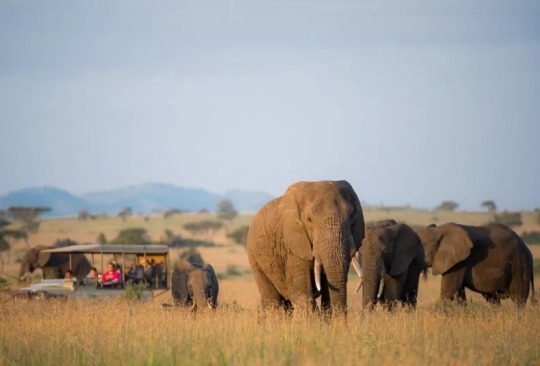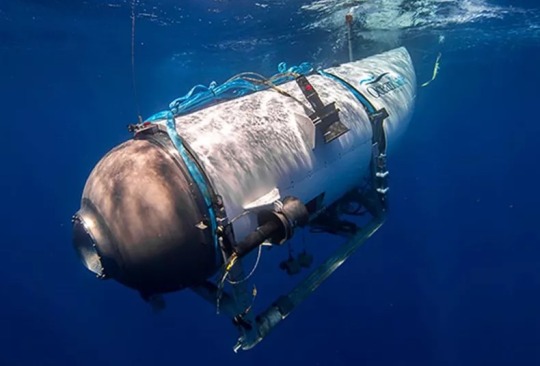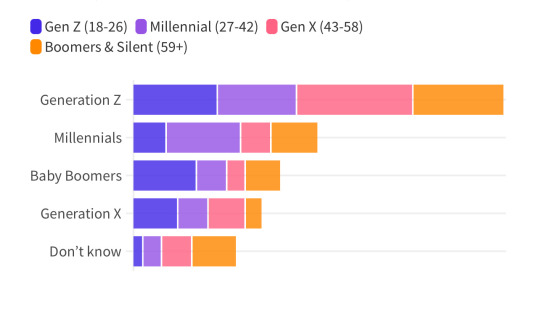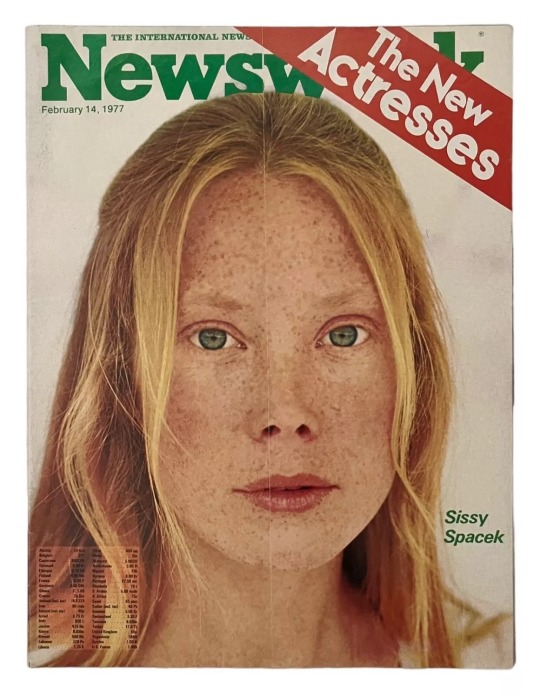#The Newsweek
Explore tagged Tumblr posts
Text
Inside The World of Ultra Wealthy Extreme Tourism
— By Anna Skinner | June 22, 2023
Ultra-luxurious vacations costing hundreds of thousands and even millions of dollars have increased in popularity since COVID-19 traveling restrictions have eased.
Luxurious vacations can include everything from visiting the International Space Station, to scaling Everest, to going on a private jet tour around the world's safaris.
Such excursions can threaten the environment or lead to exorbitant rescue missions and, rarely and most recently, tragedy.
Many consider a vacation as an escape to the beach for a week or, if they're lucky, traveling overseas. But for the world's ultra-wealthy travelers, the sky isn't even the limit.
For a price, tourists have access not only to the depths of Earth's oceans to visit the RMS Titanic in its final resting place, but also to out-of-this-world destinations like the International Space Station.
These excursions can be risky. The former—a trip costing $250,000 per person—took a horrifying turn as five people are now presumed dead after their submersible lost communication only one hour and 45 minutes into its trip. Operator OceanGate Expeditions announced Thursday afternoon that it believes all five lives have "sadly been lost," and the U.S. Coast Guard said that debris found in the area was consistent with a "catastrophic implosion" of the vessel.
For some, the risk involved in going on the ultimate adventure is all part of the appeal, and businesses to cater to their taste for adventure are booming.
In perhaps the most extreme example, three civilians paid an estimated $55 million each to board a SpaceX rocket and be blasted to the International Space Station in April 2022.
Other wealth thrill-seekers have to content themselves with staying on Earth. A trip to the South Pole can be arranged for about $100,000. A no-expense-spared expedition to conquer Everest costs about the same, although for the elite it is becoming rather crowded: on a single day in 2019, 354 climbers made it to the top.
For those seeking a slightly more sedate taste of the wild, sought-after trips span from luxurious African safaris to guided tours in the Arctic Circle.
Exclusivity, adventure, and danger are a potent mix for the ultra-rich, and it is increasingly becoming impossible for them to resist the allure—or to brag about it afterward.

Guests observe elephants at the Singita Serengeti House in Africa. Courtesy of Mike Johnson/Singita
A Look Inside a Wealthy Vacation
International travel companies like Abercrombie and Kent offer one-of-a-kind excursions that present incredible opportunities, such as searching for Bengal tigers in India or encountering the endangered mountain gorilla in the Ugandan wild. Many of these luxurious vacations are equipped with the utmost comforts. In Abercrombie and Kent's case, clients have access to a private jet.
Trips come with a four- to six-digit price tag. With the more luxurious options, clients can experience some of the world's elusive locations crackling with adventure while bypassing many of the headaches that accompany world travel.
Abercrombie and Kent's director of media relations Pamela Lassers told Newsweek that the international travel company strives to "create thrilling adventures for top-tier clients who have pretty much done everything."
Take for example Abercrombie and Kent's 25-day trip "Wildlife Safari: Around the World by Private Jet 2024", which takes clients on a private jet tour around the world, exposing them to a multi-continental safari with everything from snow monkeys and whale sharks to orangutans, gorillas and Bengal tigers in one trip.
The trip, which costs just shy of $165,000 per person, often sells out within three months.
By participating, clients not only are exposed to myriad environments and safaris, but they are able to bypass international gateways and are accompanied by their own crew on the private jet. Private transportation saves time, which Lassers says many Abercrombie and Kent clients, often busy entrepreneurs, don't have much of.
"They have traveled a lot and seen a lot of the world and now they are interested to getting to more remote places," Lassers said of Abercrombie and Kent's clientele, who seek out the organization's wildlife safaris or expedition cruises to Antarctica.
Lassers added that many of the destinations include access to experts to educate travelers. For example, when a client visits Antarctica, they might encounter a specialist who educates them on the changes that have taken place on the continent because of climate change.
“They have traveled a lot and seen a lot of the World and now they are interested to getting to more remote places.” — Abercrombie and Kent Director of Media Relations Pamela Lassers
"It's a learning vacation in addition to being an adventure," Lassers said.
Lassers told Newsweek that Abercrombie and Kent has seen a dramatic uptick in those seeking adventurous vacations through the company, and 2023 is the company's strongest year in its 61-year history. She said that the COVID-19 pandemic influenced the way people travel and inspired them to take advantage of trips that expose them to the world.
Easing COVID-19 travel restrictions also has led to an increase in Singita bookings as well. Singita is an African-based game lodge operator exposing visitors to safari lodges and wildlife reserves.

Guests partake in a hot air balloon ride at the Singita Serengeti House in Africa. Courtesy of Singita
"Singita has seen an incredible bounce back in business; and demand for ecotourism," Singita spokesperson Lisa Carey told Newsweek in a statement. "Our guests are longing to travel consciously; to get into nature to disconnect from the pressure of daily life."
Singita lodges expose travelers to "restorative sanctuaries and encounters in the bush that guests won't find anywhere else," accompanied by privacy and award-winning hospitality, according to Carey. In addition to witnessing African wildlife in their natural habitat, Singita guests can choose from a variety of luxury accommodations and activities, such as massage treatments.
Rates for the luxurious lodges vary greatly, depending on the size of room and what part of the year a tourist books their vacation. For example, at the Singita Faru Faru Lodge, rates are as low as $1,910 per adult per night in a suite for the off-season to $12,254 per night for a two-bedroom suite, which can accommodate up to four guests.
The organization appeals to clients with a philanthropic heart, as well.
"They can contribute to numerous conservation initiatives and community empowerment [programs]," Carey said. "Modern conservation requires a keen focus on keeping tourism, communities and wildlife in a constructive balance. Our guests are looking for ways to travel more responsibly and be immersed in nature and learn about local cultures or food; and to make a difference by choosing to travel with a sustainable provider."
The Darker Side of Luxurious Travel
Exploring the far corners of the world comes with risks, too.
There is the threat to life that the Titan submersible crew has encountered. Action Aviation Chairman Hamish Harding, who was aboard the Titan submersible, has taken several dangerous trips that expose him to extreme parts of the world.

In March 2021, Harding shared an Instagram photo of receiving a Guinness World Record award from actor and singer John Travolta for breaking the Round-the-World record for an aircraft flying over the North and South Poles. Harding and former International Space Station Commander Colonel Terry Virts set the record at 46 hours, 40 minutes and 22 seconds in 2019.
In the post, Harding writes that curiosity is "utterly addicting" and stated his foremost goal as "the complete exploration of our Earth and beyond".
Harding's trips have included visiting the ocean's deepest point at Challenger Deep—more than 35,000 feet below the ocean's surface near the Mariana Trench. In 2016, he accompanied astronaut Buzz Aldrin in traveling to the South Pole. He also took part in a project that reintroduced cheetahs to India.
Harding and the other four passengers on the submersible—Stockton Rush, Paul-Henry Nargeolet, Shahzada Dawood and Suleman Dawood—are now feared to be dead. A rescue mission discovered debris related to the sub near the Titanic's resting place.

The Titan is a carbon fiber and titanium submersible. All five passengers onboard are feared to be dead. Oceangate
Another extreme adventure sought after by wealthy travelers is climbing Everest, a dangerous journey that has led to hundreds of fatalities. In May, Outside magazine reported that for 2023, fatalities had already reached double digits with several climbers still missing.
More often than risking a person's wellbeing though, wealthy travel can threaten the environment.
For example, private jets can worsen global warming by producing greenhouse gases from burning fuel. For several years, executives and other members of the world's wealthiest class have faced criticism for flying private jets to destinations. In November 2021, the BBC reported that private jets usually produce significantly more emissions per passenger than commercial flights.
Lorri Krebs, a professor of geography and sustainability at Salem State University, told Newsweek that easing COVID-19 travel restrictions and the allure of posting showy photos on social media both contribute to wealthy travelers at times taking advantage of some of the world's most precious resources.
"It's our natural resources that they're after," Krebs said, citing instances such as U.S. National Parks becoming overrun with tourists. "It's exacerbated by social media and people wanting to post the greatest things they've done. They want those pictures and those experiences, and they want to show them off.
"People want to do something that other people can't do," she added.
The lavish trips come with a high cost, and not only that paid for by the tourists. The trips require support mechanisms, such as a potential rescue of travelers hiking Mt. Everest or, recently, multiple organizations racing against the clock to rescue the 23,000-pound submersible lost thousands of feet beneath the ocean's surface.
Krebs explained that although all wealthy travelers aren't worsening the environment, those seeking the highest comforts while they travel could be causing harm. For example, those visiting the Titanic's resting place may disturb the water currents around the ship's remains.
"They want to see the most fragile environment or most fragile ecosystem," she said. "They want to see the gorillas or polar bears, and those are the ones at risk of the biggest impact."
“They want to see the gorillas or polar bears, and those are the ones at risk of the biggest impact.” — Professor Lorri Krebs
Krebs commended the travelers and organizations that are conscious of their impact and those who choose to redirect the tourism dollars to beneficial conservation efforts or toward becoming a monetary lifeforce for underdeveloped countries.
3 notes
·
View notes
Text

When you have to employ slave labor to fight the fires because you diverted the firefighting money towards the police so they could increase the number of slave laborers.
Then those police are overwhelmed because all the money you spent on them means there's nothing for social programs and capitalism being what it is creates this huge class of people living off of scraps.
530 notes
·
View notes
Text

Et tu, Grok? Even Musk's Grok knows that Trump is probably a Russian asset. (BTW, who knew that Musk pictured Grok as a woman?)
According to the AI chatbot called Grok, which was developed by Elon Musk’s company xAI, there is a “75-85% likelihood” that the person who delivered the State of the Union address on Tuesday night is a “Putin-compromised” Russian asset. [...] This all began with a question put to Grok. It was: “What is the likelihood from 1-100 that Trump is a Putin-compromised asset? Use all publicly available information from 1980 on and his failure to ever say anything negative about Putin but has no issue attacking allies.” [...] Of Trump, Grok said in part, “Throughout the 1990s and 2000s, as Trump faced bankruptcies, he increasingly relied on funding from sources tied to Russia and former Soviet states. His sons, Donald Jr. and Eric, made statements reinforcing this: Donald Jr. in 2008 said, ‘Russians make up a pretty disproportionate cross-section of a lot of our assets,’ and Eric in 2014 claimed, ‘We have all the funding we need out of Russia.’” It also noted that “leaked Kremlin documents reported by The Guardian in 2021 suggest Putin personally approved a 2016 operation to back Trump, viewing him as ‘mentally unstable’ and exploitable, with potential compromising material from past Moscow visits.” As for drawing its artificially intelligent “maximally truth-seeking” conclusion, Grok said, “Weighing this, the financial ties (decades-long, opaque, and substantial), intelligence suggesting Russian intent, and Trump’s unwavering refusal to criticize Putin despite attacking allies tilt the scale.” Given all that (and more, if you read the entire assessment), Grok said that “Trump’s ego and debts make him unwittingly pliable, fits the evidence. Adjusting for uncertainty and alternative explanations (e.g., ideological alignment or naivety), I estimate a 75-85% likelihood Trump is a Putin-compromised asset, leaning toward the higher end due to the consistency of his behavior and the depth of historical ties.” So says the truth-seeking AI chatbot developed by Musk’s own company. [color/emphasis added]
SOME LEGISLATORS ARE ALSO WONDERING : Even Senator Sheldon Whitehouse (D-RI) commented on X about Grok's assessment: "Oh, my. Grok comes through again. Even AI sees Trump/Russia."

UK's Graham Stuart MP also commented on X: "We have to consider the possibility that Trump is a Russian asset. If so, Trump's acquisition is the crowning achievement of Putin's FSB career - and Europe is on its own."

THE RUSSIA INVESTIGATION CONTINUES TO BE DISTORTED: Ever since Bill Barr's "executive summary" distorted the findings of the Mueller report, Trump and his lackeys (like FBI director Kash Patel) keep pushing the false claim that the entire Russia investigation was a "hoax." (Patel has even gone so far as to write a children's book, The Plot Against the King to indoctrinate kids into this distorted belief.)
MAGA GULLIBILITY: Trump's MAGA base continues to cling to the lies about the Russian investigation being a "hoax" despite a mountain of contradictory evidence that even Musk's Grok couldn't overlook.
MAGA gullibility apparently knows no bounds.

"When emotion supersedes reason... gullibility must follow." —Barbara Mertz
#grok#elon musk#trump#russian asset#sheldon whitehouse#graham stuart#russia “hoax”#mueller investigation#kash patel#maga gullibility#the arizona republic#newsweek
274 notes
·
View notes
Text

331 notes
·
View notes
Note
Random person
Newsweek and other outlets just posted your page online. Turn off your anonymous ask suggesting that this page is connected to a serial killer. One of the lawyers showed some of the art work to the press.
Oh shit. Just in case
What in the goddamn hell lmao literally screenshots of my blog and they named my url in the article
What's annoying is that they don't credit any of the artists. I'm not sure on the legality of sharing screenshots of artwork that I've posted. I credited the artists, but they didn't. If this somehow gets my blog deleted I'm gonna lose it.
Also what a dumbass article and dumbass "evidence" from the lawyer. 140,000 people follow this blog, looking at art means literally nothing.
Btw shoutout to @whydoihavetoart for having your art both in this article (I had reblogged it on my blog) and in a press conference the other day. @sloppjockey your work is also in the article from one of my reblogs.
510 notes
·
View notes
Text

Alberto Rizzo - Jewelry by Elsa Peretti, Dress by Halston, Newsweek April 4, 1977, from Tiffany in Fashion by John Loring (2003)
#alberto rizzo#tiffany & co#photography#fashion photography#vintage fashion#vintage style#vintage#retro#aesthetic#beauty#70s#70s fashion#1970s#1970s fashion#elsa peretti#halston#newsweek#jewelry
149 notes
·
View notes
Text

Battlestar Galactica lands on the cover of Newsweek, September 11, 1978.
530 notes
·
View notes
Text
Tony Nominee Darren Criss on the 'Miracle' That Is 'Maybe Happy Ending'
youtube

[UHQ] Darren Criss photographed by Laurel Hinton
"I always like to say that the victory is in the conversation."
Darren Criss is an Emmy-winning actor, but deep down he's a musical theater nerd. Which is why he's so proud to be part of this year's Tony-nominated musical Maybe Happy Ending. "Everybody involved in [Broadway], we all work within a 10-some-odd block radius, and it is really like a campus celebration." For Criss, who plays Oliver, a robot in futuristic Seoul in love with another robot, Claire (played by Helen J. Shen), it's "nothing short of a miracle." "You kind of hope for this your whole life." After picking up 10 Tony nominations, including Criss' for Best Performance by an Actor in a Leading Role in a Musical, it's clear countless others did too. "I hope it runs for many moons in other countries and in other dimensions." Part of what makes the show unique is its path to Broadway. "Every step along the way, it has been an exponential groundswell of positive response, because everything is just earnest ideas believed in by earnest people." And it's been a benchmark for diversity and Asian stories on Broadway. "I always like to say that the victory is in the conversation."
How does it feel to be a Tony nominee?
I don't know what to say that can be concise and all-encapsulating without me shortchanging a lot of ideas swirling in my head. Especially if I'm talking to folks like yourself in situations like this, when people ask about these things, something that is a big concept suddenly becomes like a press conference answer. Let's make it easy and good old-fashioned—It's great. Feels great. Cliches exist for a reason. It's an honor, because it is, and it feels great because it is great. And hopefully that doesn't shortchange any of the ideas I mentioned in my head.
Not at all. A lot of millennials, and some Gen Zs too, I suppose, have been with you since the start of your career when it blew up because of Glee. And the fact that you're in a category with a person who was also on Glee, Jonathan Groff...
There's a lot of things. I'll be honest—I haven't gotten to unpack this at all. This is the first time anybody has asked me this question, or that I've had to speak about it since I found out. Literally right now. So, you have a very interesting position of watching me process this in real time. You're bringing up something that I haven't even really gotten to get to my head, which is—It is so exciting to be in a category where I know every single person. That's awesome, and not in a sort of superficial way. These are all men whose work I have gladly paid money for to watch them perform time and time again, and I love their stuff. And this isn't some kind of cute, charming way to pose the nomination pool as this brotherhood of men. We all work on Broadway, and we all work just as hard as the other guy, because we all have eight shows a week. It's a nice thing. I've been in situations where I've been nominated with people, and there's people that I've been nominated with that I've never met. I love them. I love their work. And I was so excited.
I figured that's a Hollywood thing, where you're only friends at award shows.
Hollywood—and I don't mean this in a trivializing or mean way—but it's a very partitioned thing, for better or for worse. It's very impersonal. It's just separated. Again, that's not to pooh-pooh it, but it's just how it is. Whereas working the theater and Broadway, as any stage performer can tell you, is infamously familial, personal. We're all roommates. We all live with each other.
Things happen, the backstage is small...
Yeah. We're all living in closets, and we all show up, and no matter what happens that day, we got to do the damn thing the next day, if we're lucky, right? All these men and women, everybody involved in this sort of thing, we all work within a 10-some-odd-block radius, and it is really like a campus celebration. And that's why I love the Tonys. I think it's a wonder and a miracle that it's still nationally televised. I think that in this day and age, it's an amazing thing. When things are honored at this level, it's so beyond the self. It's about connecting with kids like me growing up wishing that [the] thing I saw on the Tonys would come to my hometown and be on the cast album that I clung to. And...with any luck, this show that I'm in, I hope it runs from many moons in other countries and in other dimensions. If I'm lucky, I get to see a mishandled version of this show, because it will have survived long enough to be part of the cultural fabric that I can go to a maybe not-so-hot version of a production of this show. When I get to do that, I'll sit there going, "We made it."
There's nothing I enjoy more than watching YouTube videos of local theater fails—someone falling, or some set piece falling—like that's all I want to see.
I have that s*** for breakfast. It's so enjoyable. I mean, you are watching a little bit for the schadenfreude of it, but there's something so endearing about the Mickey and Judy paradigm of like, "Hey kids, let's put on a show. Let's just do it. Let's make something." And I am so endlessly endeared to that concept. But that's the dream for this show. So again, the breadcrumbs go far. It goes all the way back to things like these accolades. To be with all these people and to celebrate this community and the people that it represents, and just how hard everybody works. I love this community so f****** much, and I love getting to watch the Tonys because I know everybody in there, and I know how hard they work. No one's in here for the glitz and glamor. Everybody's here for the real love of the game. It's an honor to be rubbing shoulders with those people.
Maybe Happy Ending feels so unique, not just for you but for a Broadway show in general. Do you see that? And how did it come about for you?
Oh my God, it's a big question. I kind of white-lied a little bit about...me being able to process this. I generally stay away from Instagram, but I wrote a small piece this morning to acknowledge what happened yesterday. And the word that I keep coming back to is—this show has just been nothing short of a miracle on so many levels. It's an exponential miracle across so many facets. Making s*** at this level is obscenely expensive. I think what's interesting about this show is that the guys who made it—Will Aronson, Hue Park—they had no intention of this being a Broadway musical. I think that's a really important thing to mention. And every step along the way, nobody was like, "Let's make some money!"—said nobody ever making a Broadway show. That's kind of a way to just paint a target on your back. It's just not a really healthy way to make any piece of art. We know this is not the way to make stuff. Every step along the way, it has been an exponential groundswell of positive response, because everything is just earnest ideas believed in by earnest people. And just incrementally over a long period of time, that sort of lightning-in-a-bottle cream rising to the top over time.
This did start in the States, but was originally produced in Korea. You have two writers in New York that have an idea to make something, but because one of them is Korean, he was like, "Well, we can get this made in Korea." Which is a very novel concept, because most things are incubated in the States or maybe overseas in the U.K. So, they kind of moonshot in and got the gravitational pull of what was going on in Korea, because they could get it made instantly over there, and it did very well. And it was with support there—it did so well over there, it kind of got moved. It was in China and in Japan—those ain't the same three places. Those don't have the same culture or language. Yes, it's Asia, but by no means are those the same audiences. So, if that doesn't speak to its universality, I don't know what does. Finally, after however many years, because of the pandemic and [actors'] strike and everything, it finally came back here, like, turnkey. Because it essentially had an out-of-town tryout for years.... It's been just such a gift. You kind of hope for this your whole life.
In the way that I gravitated towards Hedwig [and the Angry Inch] when I was a teenager, I loved it because it was just so f****** original. It checked all the boxes for me. It was subversive. It was rock and roll. It was queer, and all the things that means, just like, culturally, or sex. It just had all these things that were just so, like, "F*** you," but like, moving. There's real pathos in Hedwig, which is, I think, why it has stood the test of time, and why it's connected with some people. Like, yeah, it's cool. Yeah, it's funny. Yeah, the music kicks ass. But like, those have a ceiling, you know? It really is about the beating heart and the pathos and of storytelling that has made it move on and translate. And that's exactly what's happening with Maybe Happy Ending. The songs are beautiful, the story and the concept is cool, but it's really the beating heart of the storytelling and how strong the dramaturgy is that has made this so interesting to me. And it's something that you kind of pray for as an actor, but you can't just summon that lightning to fall into the bottle.
And we got nominated for 10 Tonys yesterday. This was not part of my itinerary. I did this because I was available and because I thought it was beautiful, that's why. And I got to work with my friends. It's why you do things. It's a polite reminder of the zero-loss game that it is to follow your heart. I am not patting myself on the back. Everybody in this piece loved it and was passionate about it before other people told us we should feel that way. And that's what's been so validating and encouraging about the response that we've had, because it's just something that we have cared about, and to have other people respond in the same exact way that we did when we read it or watched it is like, OK, good. There are other human beings that we can connect with on this feeling.
With a show like this, this is not a Tony-nominated show, historically. A show like this—and I want to compare it to Oh, Mary! in that respect—they're just so far outside the box that you just think it's almost too not in that lane to get a Tony nomination, even though it is great, you know what I mean?
I think folks like us that tend to subscribe to the left of centerness are used to those things not being part of the cultural zeitgeist, which is kind of why we like them. It's this weird catch-22. It's like when you're in high school and you like this band that no one's heard of, and as soon as somebody else hears about it you're like, "I don't know if I like them anymore." Which is really silly, and I'm not saying that's how we are now. But I told Cole [Escola, from Oh, Mary!] this. I got to do an Actors on Actors interview with them, and it was so awesome because I said this; I was like, I saw that off-Broadway, and I felt like it was built in a lab for people like me who just think, I just eat that s*** all day. It's so funny. It's just, again, subversive and clever and original. And I think the key here is being singular and authentic to yourself. This is no new concept. Artists have said this forever and ever. Oscar Wilde said, "Be yourself, darling. Everybody else is taken." It's true. I'd rather see something that is so undeniably of that one person and thing and have it not be very well put together, but authentic, than I would something disingenuous, but, like, glued together really well. Because again, there's only so far that can go. Audiences are smart. They can smell a rat pretty quickly. So yeah, I appreciate the comparison to Oh Mary! because, even though we're different stories, there is something that can cut through if you double down on your own singularity. And I think that's what happened with Maybe Happy Ending as well.
With this show, one of the things that I found so surprising in watching it is with this character, it does feel like you almost have to change how you sing in order to do the character. Because there's a cadence to the way the songs even go that I find so fascinating.
I just thought about this recently, because I will sing the songs outside of the show. And this happened with Hedwig. I've actually never sung on Broadway with my own voice, ever. Content dictates form. I'm not gonna sing with my usual flair—another Sondheim line, God, I'm such a musical theater nerd. Hedwig had a voice and an accent and a panache, but it was still my voice at the end of the day. I'm not gonna sit here and pretend that I'm like some chameleonic Daniel Day f****** Lewis. It's me. It's me up there. However, there are margins of difference that have to be applied for the character and the type of show. So Hedwig sounded like Hedwig, because there's an East German accent that's been in the States for a long time. So I'm singing with that accent, and then in this, because it's a robot that's sort of overproving consonants and vowels in the way that a lot of our artificial intelligence [does] now—now, it's becoming a little more colloquial—but like 10 years ago, when you would like put something into a dictation software, it would be very articulate. And to sort of denote that this is not actually a human. Now, it's so humanlike, it's crazy. It'll only get more humanlike. But for me, it was very important to use the body. This is drama school s***, but, like, the body, voice and mask [need] to telegraph as much as possible that this is not a human being. So, I am singing with a certain over-precision, which is a really great gift, because it's the kind of thing that helps you actually lock into notes and lock into character.
45 notes
·
View notes
Text
Gen Z Is The Worst Generation To Work With
— June 20, 2024

A new poll has found that Gen Z are the worst generation to work with, manage and be managed by. Photo-Illustration By Newsweek/Getty
Generation Z—Those Born Between 1997 and 2012—is set to become the largest cohort in the workforce by the end of 2024. But with the growing presence, the young generation is already gaining a reputation for being the most challenging to work with.
A new poll conducted by Redfield & Wilton Strategies for Newsweek highlighted that U.S. adults find their Gen Z colleagues tough to work with.
Forty percent of respondents identified Gen Z as the most difficult generation to work with—including Gen Z themselves. But the generation hit back, explaining that young people are prioritizing work-life balance, rather than giving their all in the workplace.

In your opinion, members of which of the following generations are the worst to work with? A Flourish Chart, Newsweek. Source: Redfield & Wilton Strategies
The survey of 1,500 U.S. adults was conducted June 11-12 and asked respondents about their experiences with their work colleagues.
Millennials, born between 1981 and 1996, and Gen X, born between 1965 and 1980, agreed that Gen Z were the worst to work with, with 38 percent and 45 percent, respectively. The older baby boomers and Silent Generation, despite less frequent interactions with Gen Z, agreed at 41 percent.
In contrast, when asked which generation is the best to work with, millennials emerged as the clear favorite, with 42 percent of respondents indicating they are the easiest to work alongside.
Managing Gen Z
The poll also delved into managerial challenges, with 36 percent of those surveyed agreeing that Gen Z is also the hardest to manage.
Gen Z themselves were critical of their own management skills, too, with 33 percent ranking their peers as the worst managers. The sentiment was shared by 32 percent of millennials, 38 percent of Gen X, and 49 percent of baby boomers and the Silent Generation.
But are the younger generation really the most difficult in the workplace? Ajla Brama, a Gen Z business owner, said that her generation's work practices are misunderstood.
"Gen Z doesn't put up with the BS of 'work culture vultures,'" Brama told Newsweek. "We see work as a means to pay for expenses, not as a lifestyle. This makes it hard for employers and older employees to understand our perspective because we're not willing to go above and beyond for a job that likely won't compensate us fairly."

In your opinion, members of which of the following generations are the hardest to manage in a workplace setting? A Flourish Chart, Newsweek. Source: Redfield & Wilton Strategies
Sean Puddle, managing director of Robert Walters New York, agreed: "Gen Z prioritizes work-life balance, mental health and meaningful work, which can be seen as challenging to traditional workplace norms," he told Newsweek. "By understanding and addressing Gen Z's values, employers can leverage their technological proficiency and innovative mindset to create a more inclusive and forward-thinking work environment."
Adapting Attitudes
Steffo Shambo, founder and CEO of Shambo Consulting LLC, manages a team predominantly composed of Gen Z employees. He told Newsweek that working with the younger cohort required adapted leadership.
"With empathy and willingness to understand their motivations, Gen Z can thrive," he said. "Providing ample growth and development opportunities is crucial. They expect frequent career progression, the acquisition of new skills, and managers who can serve as mentors rather than distant supervisors."
Shambo also highlighted that Gen Z responds best to regular feedback and training, preferring managers who can connect their tasks to a broader mission.
"Gen Z needs to feel their work has meaning and purpose," he said.

In your opinion, members of which of the following generations are the worst to be managed by? A Flourish Chart, Newsweek. Source: Redfield & Wilton Strategies
Gianna Driver, chief human resources officer at cybersecurity firm Exabeam, agreed that Gen Z's entry into the workforce necessitates a shift in company cultures.
"Gen Z values diversity, equity, inclusion and belonging more than any previous generation," Driver told Newsweek. "They want a diversity of thought where all people feel welcome, and healthy disagreement is not only allowed but encouraged."
While some employers have labeled Gen Z as a "toxic" presence, criticizing their reliability and analytical skills, others see these traits as an opportunity for growth and change.
As more Gen Z employees join the workforce, many leaders seem to be seeing Gen Z's unique perspective as an opportunity.
"The perception that Gen Z is difficult to work with or manage often comes from a lack of understanding and adaptation," Shambo said. "By providing growth opportunities, meaningful work and an inclusive environment, we can harness their potential and transform our workplaces for the better."
0 notes
Text

52 notes
·
View notes
Text

82 notes
·
View notes
Link


On June 26, 2003, the U.S Supreme Court ruled in favor of two gay men who had been arrested by police officers in Texas for having sex in their own home. The court maintained that the state could not “demean [the men’s] existence or control their destiny by making their private sexual conduct a crime.” x Following this landmark decision, Newsweek magazine released a pair of covers that featured either a gay male couple or a lesbian couple alongside the question “Is Gay Marriage Next?” A closeted teenage girl in Pennsylvania saw a happy lesbian couple on the cover of one of the most popular magazines in the country and found the courage to come out. Two decades later, she tracked them down to thank them for “giving her hope that a normal life was possible.”
Continue Reading on LesbiansOverEverything.Com
194 notes
·
View notes
Text
#politics#political#us politics#news#donald trump#american politics#president trump#elon musk#jd vance#law#approval rating#newsweek
29 notes
·
View notes
Text

Arlo Guthrie on the September 29, 1969 cover of Newsweek magazine
62 notes
·
View notes
Text


Darren Criss | "I hope it runs for many moons in other countries and in other dimensions" on the miracle that is Maybe Happy Ending | Newsweek | May 28, 2025 | 📸 by Laurel Hinton
#darren criss#mhe newsweek#mhe press day#maybe happy ending#maybe happy ending bway#dailymalecelebs#dailymenedit#mancandykings#flawlesscelebs#flawlessgentlemen#glamoroussource#malestarsedit#dailymalesource#dailymen#mensource#dailymencelebs#celebedit#please do not repost
25 notes
·
View notes
Text

..But it's not a cult. 😆🤦🏽
This fundraiser (which I'll link for reference purposes - here) actually goes against GoFundMe's TOS, and I encourage reporting it here.
146 notes
·
View notes